"We’ll meet you at the concrete pylon, near the PK40 marker.”
It’s Arnaud, my guide. In his heavy French accent, he describes the almost invisible road marker system throughout the island. PK0 is the cathedral in Papeete. Ah, now it all makes sense.
The east coast of Tahiti is that kind of place. Where the oral traditions of storytelling extend to the road directions.
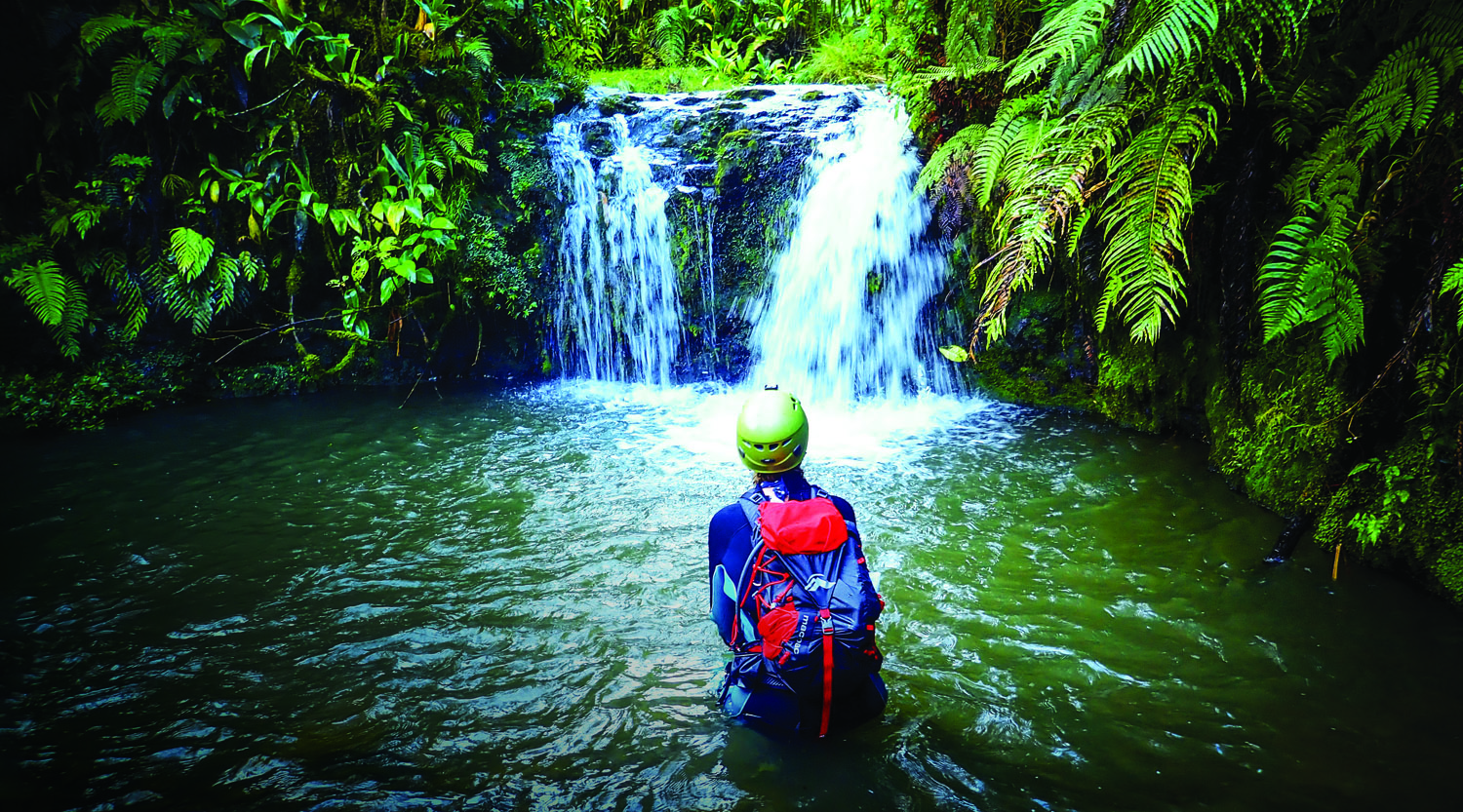


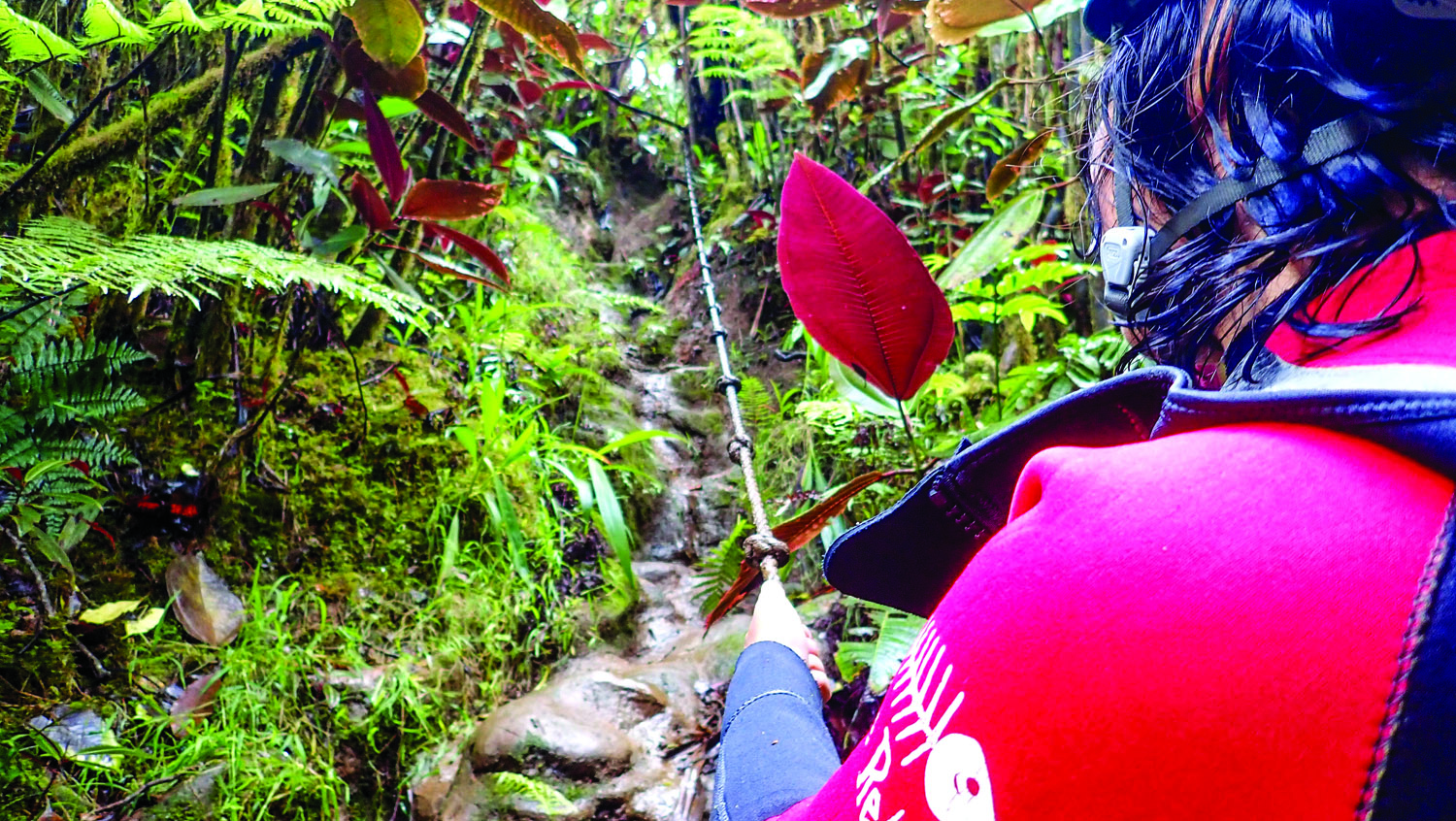
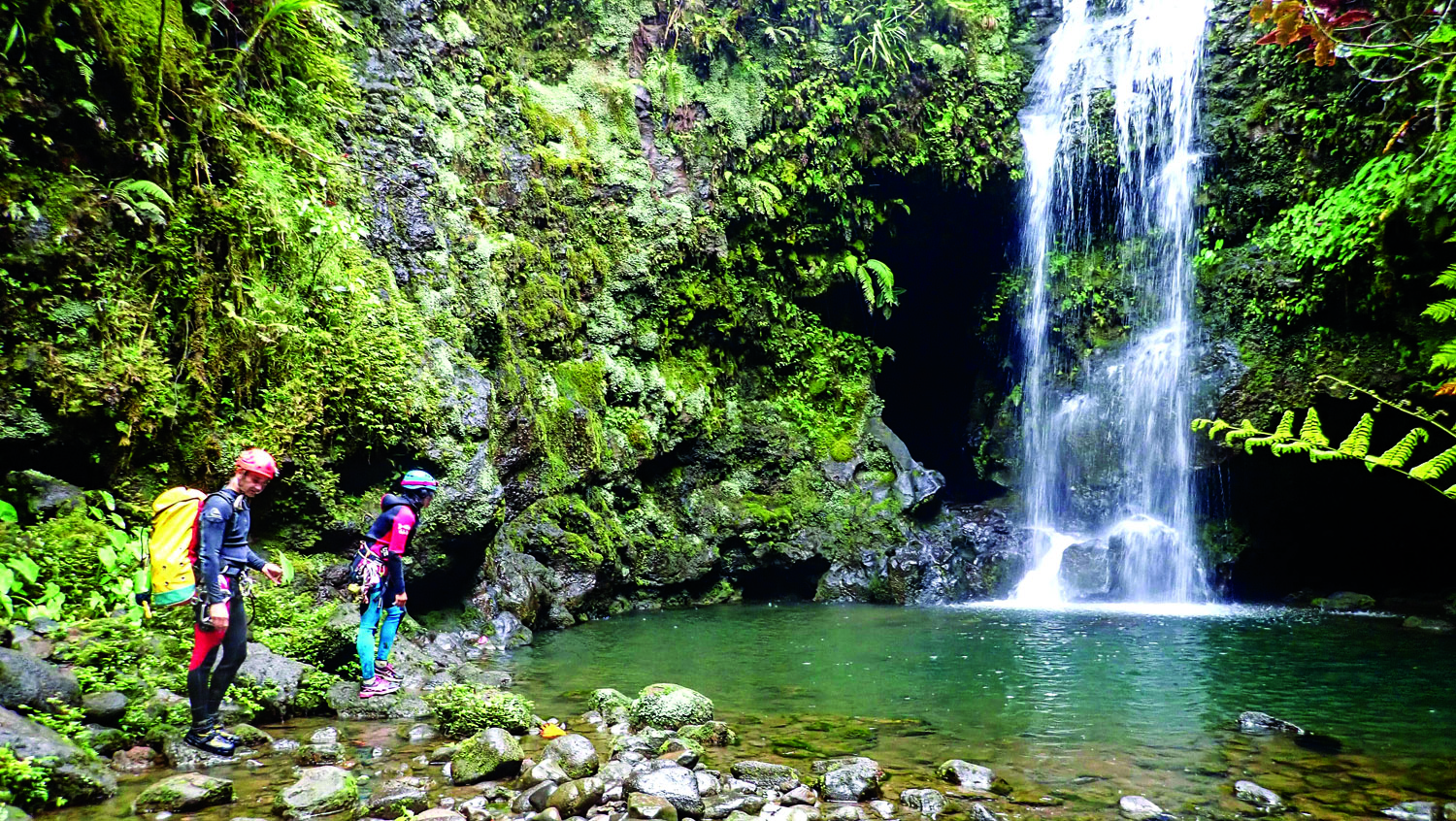

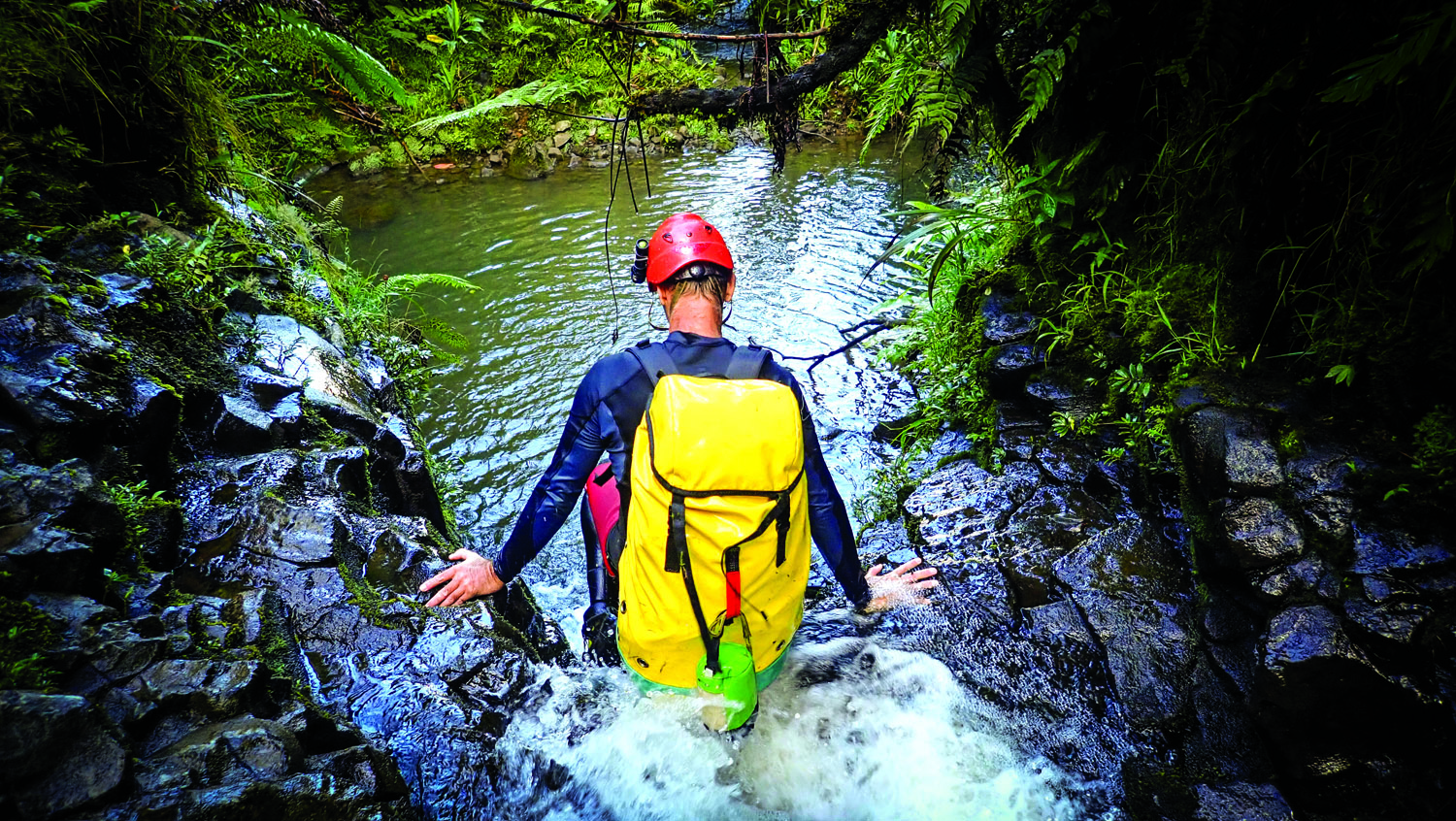
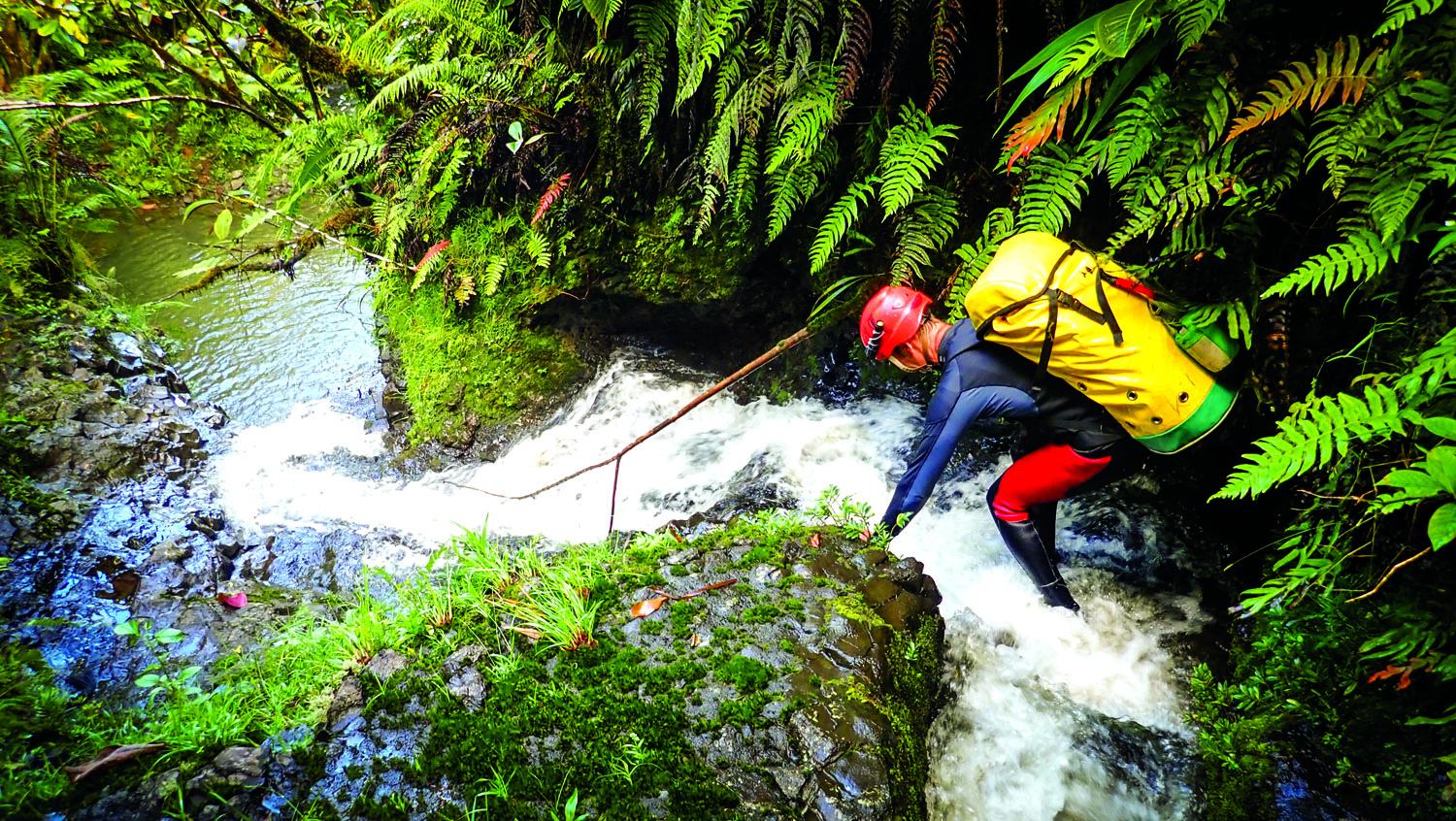
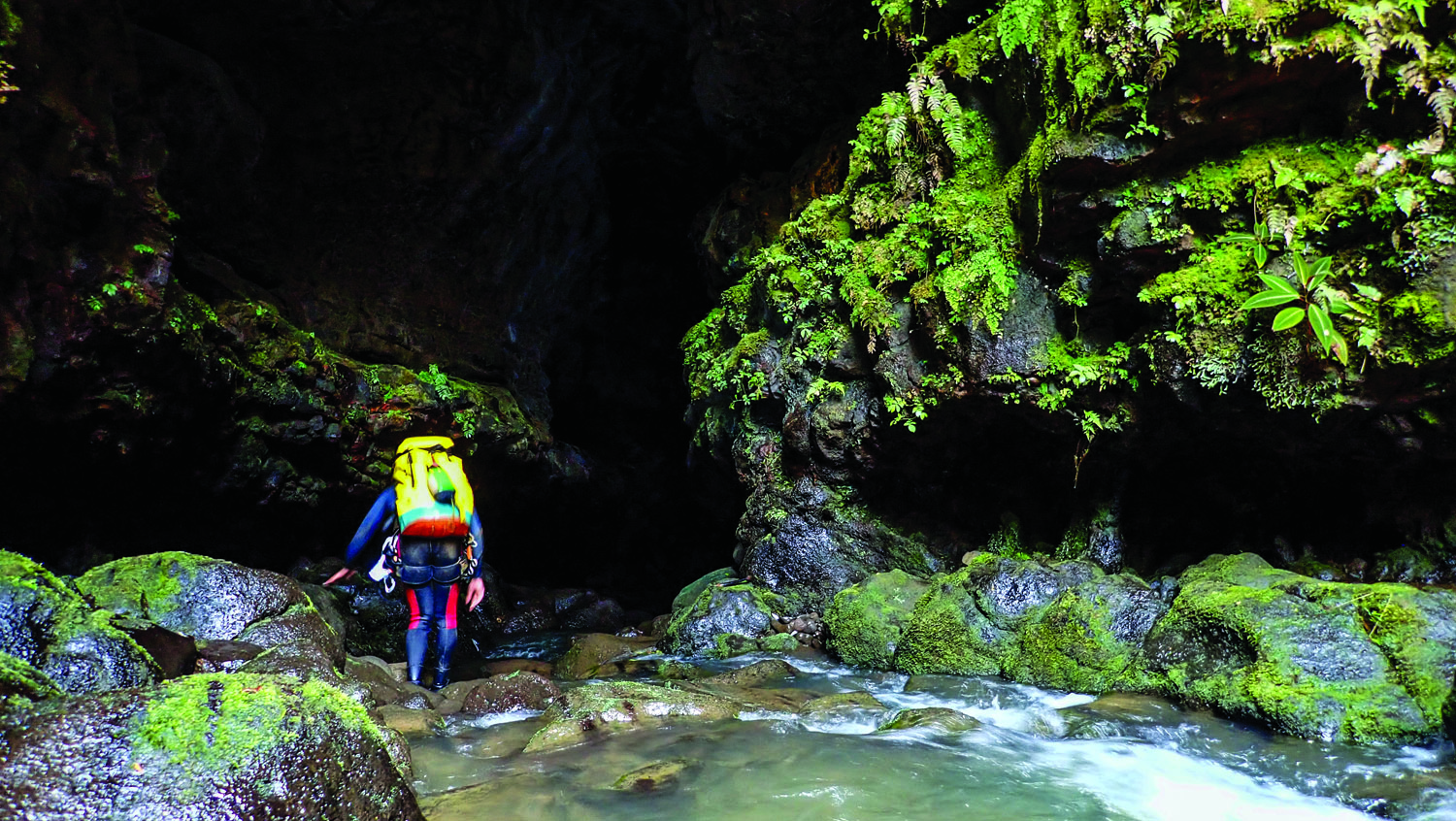
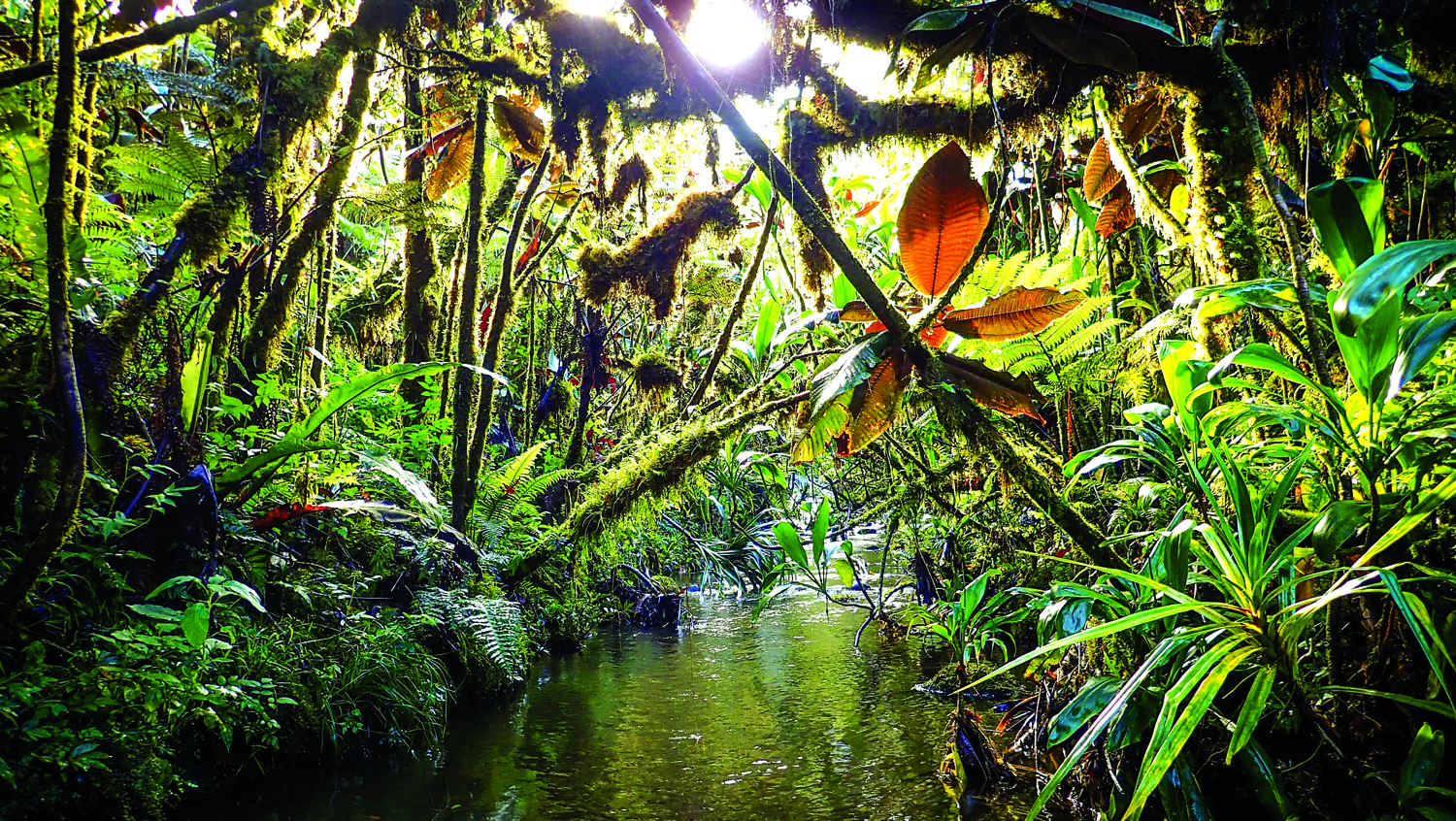
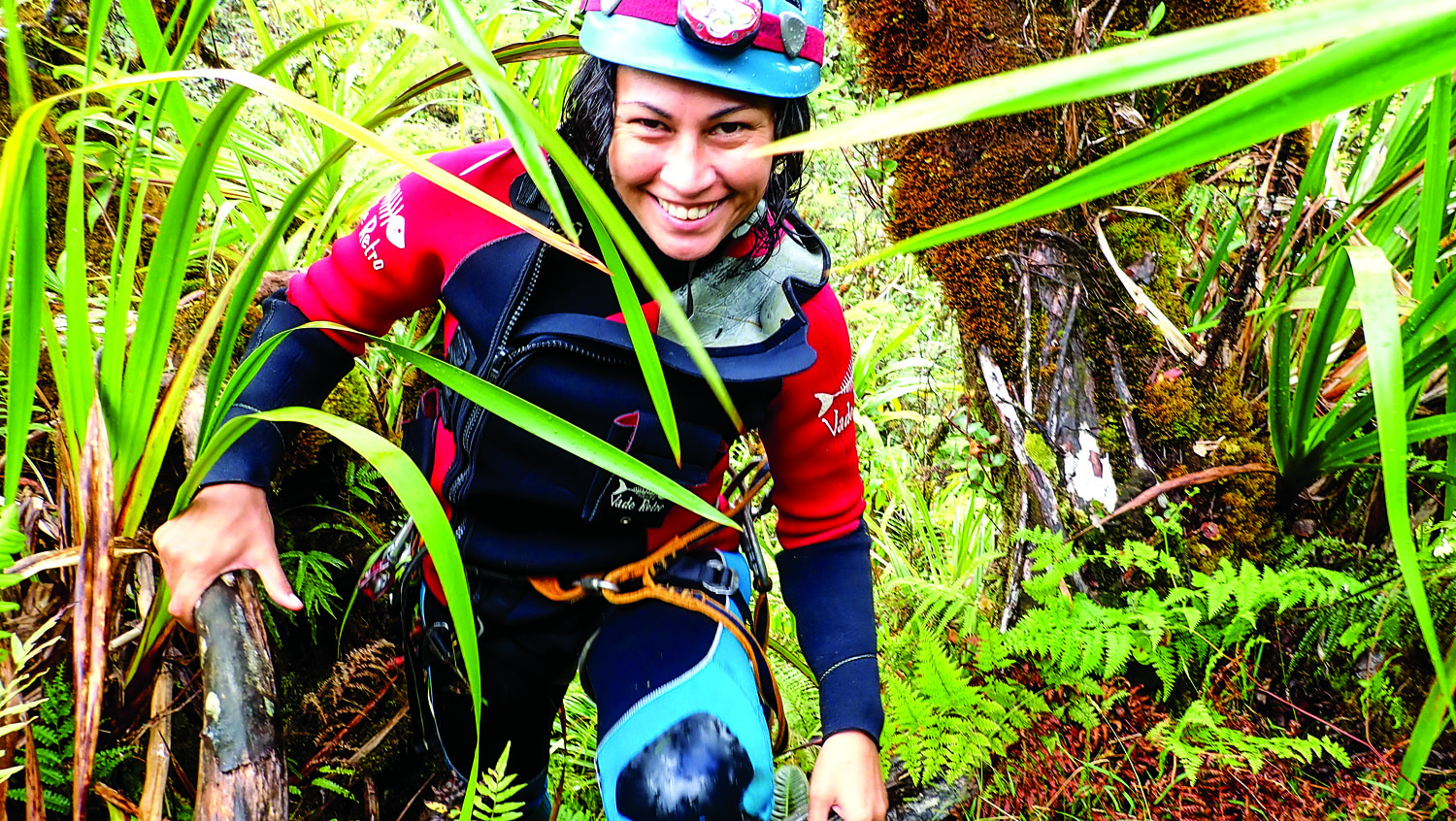
TO THE TUBES!
Jumping in the open back of his green Land Rover workhorse, we begin our climb from the dazzling aqua waters (not far from the surfing Mecca of Teahupo’o) to over 800 metres above sea level. As if by some kind of magic, the landowner emerges from the jungle to accept the access fee and open the first of several gates.
These rough bush roads were put through by the hydro-electric company of French Polynesia. According to Arnaud, these folks produce the most expensive electricity in the world.
Crawling up along the spines of ridges and spurs – dark and rich underneath, lush verdant green above – we follow a series of small dams, pipes and assorted hydro infrastructure. Here, like Australia’s own Snowy Mountains, the appearance of a man-made pipe in otherwise virgin terrain cuts through the natural lullaby, sung from the spirit earth, from what French Polynesians refer to as Mana.
As much as the metal and concrete complain, they can’t sing louder than the million shades of green around me as the temperature starts to drop. Here on French Polynesia’s main island of Tahiti, it may average 30 degrees Celsius by the ocean, with around 75 per cent humidity, but as soon as we pass 350 metres above sea level on our ascent, my sweat suddenly dries and it’s much closer to a perfect day of 23 degrees, dropping similarly in humidity.
The skyline of the island of Tahiti is dramatic. Sharp, jagged, violent basalt peaks shoot up with force and scale. Cloaked in thick, dripping rainforest, fed by indecisive downpours, short-lived but effective in their soaking, and teased by the wisps of cloud that hold fast to the serrated edges.
It’s within these dragon-back scales that I will spend the day, pushing through the moisture clinging to the jungle from last night’s storm, along narrow and overgrown muddy single tracks to then enter the darkness of a volcano’s memories.
It’s not hard to believe an American tourist was once lost in the mountains here for 21 days, a historical occurrence that testifies to the importance of going with a local guide. This jungle grows as you watch. Even for my guide, who leads people here almost once a week, the track looks different. He takes a wrong turn, needing a moment to find our path once again.
Descending the slippery track, drawn forward by the gradual crescendo of an invisible waterfall, we emerge onto a creek bed to find an astonishing scene in front of us. Behind the crashing sounds of falling water there are two gaping black holes, ten metres high, side by side. Like two eyes of a skull, it wouldn’t seem out of place to see Indiana Jones leap from one into the waters below, followed by angry Nazis.
DEEP WITHIN
Scrambling up through cascades of water, we enter the left eye of the skull, grateful for full wetsuits, and find ourselves in a world more familiar to canyoneers. We step inside the darkness as the light and sound of the waterfall falls away.
These cavern-like tunnels are created when a crust of lava cools and is flushed with water over thousands of years. Instead of traditional limestone caves (such as Jenolan Caves), these are basalt, blackened orifices, the floor scattered with pebbles, rocks and boulders of the same. Some, pumice-like with visible air bubbles, are light; whereas others are slick and shiny like cannonballs, and feel just as heavy.
The tubes vary in height from soaring cathedral ceilings to the metre high crawl that will lead us towards the exit tube. Several dark shapes dance around the walls with the shadows of our headlamps, teasing us with the possibility of more tubes in unknown directions.
I truly feel like I am passing through the intestines of an ancient, sleeping giant.
To turn off our head torches was to envelop ourselves with total blackness. Still and thick, the heaviness elicits unexpected psychological responses, as the cool temperature and occasional breeze hints at the unseen escape ahead of us. As the dial is turned up on all our other senses, we fumble for our headlamps, trying to escape the grips of darkness. With the light comes relief.
We may try to escape our fear of the dark, but something we cannot escape is the sound of rushing water. Within the labyrinth it’s impossible to work out where it is coming from. Is it above, beside or below us?
The relentless cutting power of water over millions of years continues to pound the lava walls, digging further in. At one point, the guide bends down and thumps the floor with his fist. It is clearly hollow. What other adventures and tubes lie sealed below our feet, constantly being carved into something new?
The three main tubes vary in length from 100 to 300 metres and although there are easier routes, we elect for a technical traverse which involves multiple short abseils (up to eight metres), down-climbing through slippery cascades and heart-stopping water jumps into pitch darkness.
Even with a natural sense of direction, it didn’t take long for my internal compass to be spinning. Without visual references of light, the only clue seems to be to follow the water flow, that is until our guide turns quickly to the left, crouching low and crawling through a side passage. Yet again proving that a local guide is a must.
Time also plays tricks on my mind, with a couple of hours passing since we entered the lava tubes. I realise I’m suddenly hungry and am happy to see a tiny dot of light ahead signalling daylight and lunch.
WALKING THROUGH WATER
Emerging from the all-encompassing lava tubes, our vision and senses begin to feel normal again. The sounds of birds, the layered green light and earthen smells of the jungle seem to make the French baguette even tastier, fuelling us up for the journey home.
But this is the jungle, where tracks disappear overnight and Avatar-esque species reach out to embrace you. So rather than walking along a track, we take nature’s pathway and in so doing I undertake one of the lesser known experiences available to travellers in French Polynesia: “Randonnée Aquatique” or simply put, Aquatic Hiking.
Keeping to the rocky creek beds, sliding and clambering over and through fallen nature, slipping on ice-like stones, it’s easy to see why this is a preferable journey to an overland one.
This is full immersion in jungle delights. It turns out the greens can get greener, the water jumps and cascades prettier, the plants more diverse – and experiencing it all so intimately, fresh out of the sensory deprivation of the tubes, is incredible. Whereas the journey back to the cars on some trips can turn into an energy and enthusiasm low point, this return kept on delivering in wonder-filled spades.
THE SPIRIT OF THE LAND
While my body ached from bruises and bumps, the adrenaline was still rushing through my body from the water jumps and I didn’t want it to finish, to be forced to return to the concrete snake of the power company’s rough road.
I found myself longing to linger in a part of Tahiti I had never known existed, away from the cliched tourism images of overwater bungalows and fancy cocktails, to instead be touched by Mana, the spirit of the land.
FAST FACTS
- Tahiti is the largest island in French Polynesia
- French Polynesians are citizens of France, with French being the official language; though Reo Tahiti (Tahitian) is widely spoken
- The population of 190,000 is 70 per cent Polynesian and 30 per cent European, Chinese and mixed heritage
- The flight time, from Sydney to Papeete (via Auckland), is nine hours
- The highest mountain is Mount Orohena at 2,241m
- My guides for this adventure were Natura Exploration





